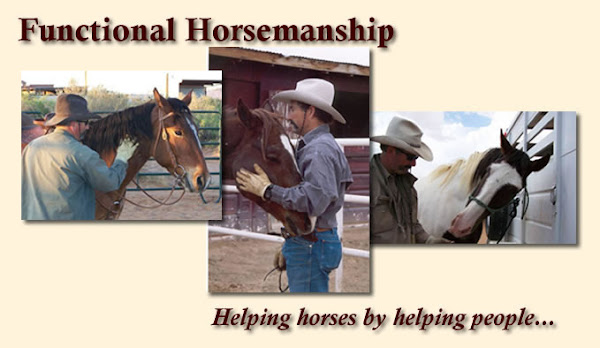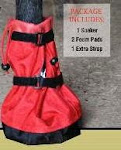James wrote to Functional Horsemanship and asked, I don't believe joint supplements for Horses work, as I have tried several different brands for a few years, but if you have had some good luck with a particular brand please let me know as my 20 year old mare, a Tennessee Walking, is really getting stiff.
James, I would have a good horse vet look at your mare to figure out if there are any detectable problems causing your mare to be stiff, but 20 years is a fairly old horse. Some stiffness and crepitice, which is the creaking and cracking sound in the joints, would be normal.
I have talked to both human and equine scienitists about joint supplements. What I have been told and believe is that,
1 - There are minimal trials and data on joint supplements. The manufacturers of these suppplements are kinda reluctant to fund independent research because there is the chance the research would come back as ther products not helping what they claim - kinda like funding your own funeral. There is plenty of anecdotal or personal testimony of joint supplements that work, just without the provable data.
2 - Most of the scientists, both horse related and human, that I have talked to believe that Glucosamine works to strengthen cartilage and actually rebuilds it slowly, but are pessimistic about the two other common joint supplements, Chondriotin and Hyluaonic Acid, having much help on joints.
3 - that quality of the product is the key.
I believe there are some joint supplements that help horses. I think that a horse would have to be on a quality product for at least a month to get any benefit and even then it may be hard to tell if it is helping. I had a similar aged ranch horse who had a front knee injury. I put him joint supplements as I rehabilitated him. He seemed to be doing much better after a couple months where I could team rope off him. I was unsure if the progress was related to his rehabilitation (exercise and good feed) or the joint supplements. I now tend to believe it was a combination of both.
If it doesn't put you out too much, I would try another joint supplement program for a few months and see what it does. Just pick a quality product with a high level of Glucosamine and at least some sort of outside approval, such as NASC or GMP. I think that a product with Vitamin C would be preferable. Vitamin C is an anti-oxidant that is thought to be good for connective tissue health. MSM or Methylsulfonylmethane is a sulfur compound and another common joint ingredient. Some think that MSM helps in the organic synthesis possibly helping other joint compounds get into the joints and tissues, and helps reduce inflammation. I am waiting to be proved if MSM works in any capacity.
Smart Pak is a company that offers supplements and information on all sorts of products. Click on the link to see a chart of joint supplements broken down by form (pellets or powder), ingredients, seals of approval and cost. I have one of my horses on a joint supplement presently and I think the small cost is worth the possible benefits to the horse.










































